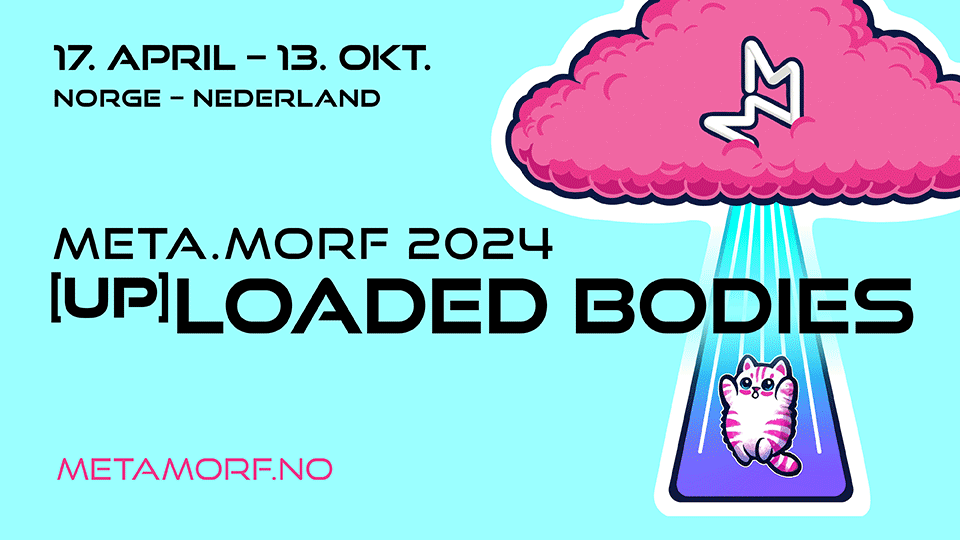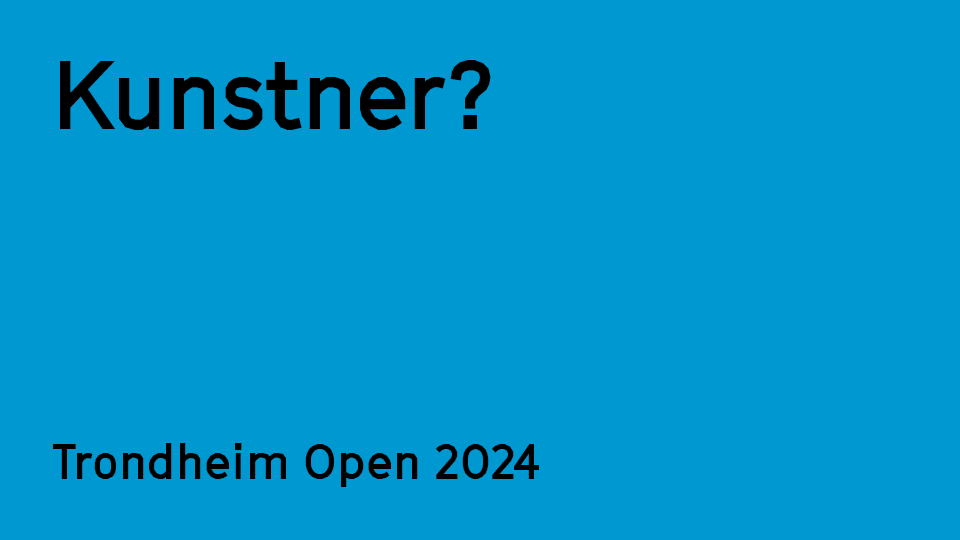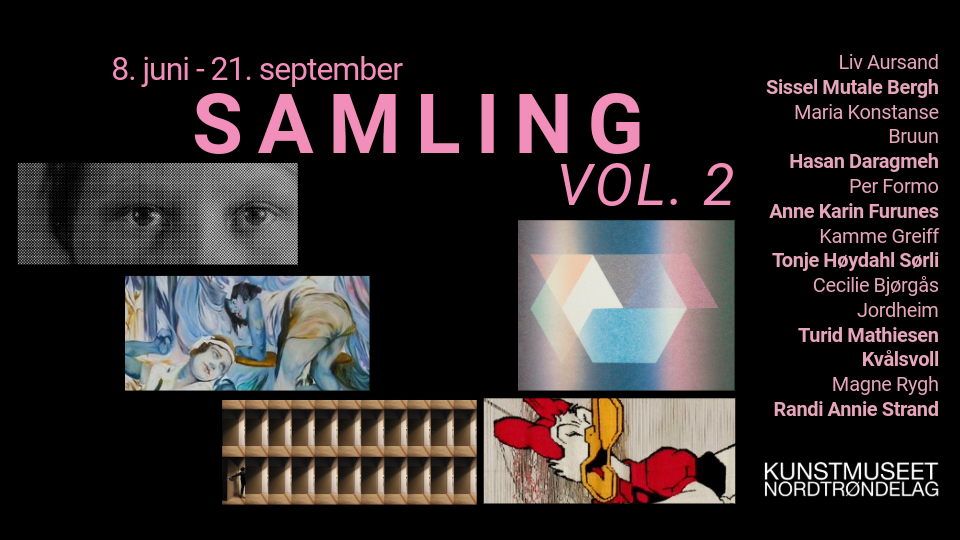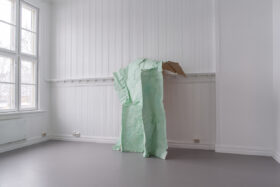The Humble Collector
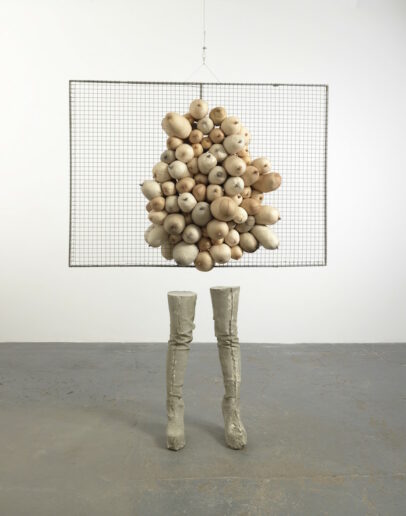
Intervju, Hjørdis-Linnea Myhre 30.05.2017
“If on a Trondheim’s Night a Traveler …” opened recently at Trondheim Kunstmuseum. The exhibition shows selected works from one of Europe’s most important contemporary art collections. Artscene Trondheim’s Hjørdis-Linnea Myhre got the chance to meet the collector, Patrizia Sandretto Re Rebaudengo, during her stay in Trondheim. The exhibition’s curator, Stefano Collicelli Cagol, also took part in the conversation.
Hjørdis-Linnea Myhre: Patrizia Sandretto Re Rebaudengo, you are one of today’s most important collectors of contemporary art. Could you tell us about how it all started?
Patrizia Sandretto Re Rebaudengo: I’ve been collecting art for almost precisely 25 years. In 1992 I went to London with a friend of mine, a collector, and we spent a week visiting galleries and museums. I think I was lucky to get to visit quality spaces and meet gallerists like Nicholas Logsdail at the Lisson gallery. He introduced me to several artists and their studios. For instance, we visited Anish Kapoor’s studio, something I will never forget. Seeing all his moulds and his sculptures, covered with blue, yellow and red pigment. And he was there, explaining his art and how he worked.
That moment made me realize the great advantage in collecting contemporary art as opposed to antiques or modern art. It gives me the unique opportunity to get to know the artists themselves, and thereby fully understand their work. So, at that point I decided to start collecting for my own sake. But I soon understood that there was a lot to do on the Italian art field. Italy had only one museum of contemporary art, the Castello di Rivoli in my hometown Torino. This lack of public museums, and the desire to share my collection, meant that I quite early realized that a collection needs to be shown to the public, and spurred me to start a foundation in 1995.
HLM: What kind of foundation did you establish?
PSRR: The Sandretto Re Rebaudengo Fondazione is a non-profit foundation. We don’t sell art or engage in any commercial activities; we work with and for the artists. In the beginning, I had neither a location nor a vision for the foundation; I only knew that I wanted to hold exhibitions. At that time, there were not as many art institutions as there are today. Now the foundation has two spaces: one forty minutes outside of Torino in Palazzo Re Rebaudengo, Guarene d’Alba, and one in the city centre, which opened in 2002. That newer 3 500 square meter building is our main exhibition space.
One important aim of the foundation’s work is to support the artists. Not only by exhibiting their works, but also by doing something in addition: to commission and produce new works. For instance, we recently collaborated with the Argentinian artist Adrián Villar Rojas. The exhibition Rinascimento, which he produced at our space, consisted of huge stones, fresh swordfish, foods and fruits. There could not be any heating in the space for four months, and the artist wanted to use only natural light – quite a few challenges – but the result was extraordinary.
Another important aim is to provide the opportunity to understand contemporary art, for everybody. At the time I started collecting, I myself didn’t really understand art… I remember visiting museums where you would only read the name of the artist, followed by: “Untitled, 1999”. I decided that when I had my own space, things would be different, thus at the foundation we have an educational department. Around 20 000 children and students visit every year. We also offer activities for blind and deaf people that are related to our exhibitions. Our skilled exhibition monitors also play an important role. Before every exhibition, they are prepared for working within that particular exhibition, creating mediation between the art and our visitors. This is important to me.
HLM: You mentioned Adrián Villar Rojas´ exhibition. That must be an example of contemporary art that is difficult to collect?
PSRR: I agree. But I have to say that I never bought a work while thinking: “where would I install this at home?” Art is not decoration; art is something more, something precise. For me it has to be political, social, something that talks about the moment in which we live. My main goal is to buy good works, not names. In my collection, I have works by artists who have withdrawn, who are no longer involved in the art scene, but whose works from that specific time, are still important.
I prefer art with content, art that expresses something about important themes in our lives. I have also paid a lot of attention to female artists. In the beginning, I divided my collection into themes, and one of these consisted only of works by female artists. And, for the whole of 2004 we only showed works by women in the foundation’s spaces. One does not have to be a feminist to understand the importance of supporting women within the male dominant art scene.
HLM: The task of helping the artists seems to be crucial to you?
PSRR: Yes. I feel that this is an important part of my job. It’s not always easy to be an artist in Italy, compared to Germany or America, for instance. We don’t have many educational institutions for fine art, like the art schools in London for example. It is a long process to change the working conditions for Italian artists.
At the Sandretto Re Rebaudengo Fondazione, we have established a program for young curators to forge relationships between international curators and Italian artists, which can help them in the long term. In that program, three young international curators, chosen by a jury, are invited to spend three months in Italy, travelling the whole country, meeting Italian artists in their studios and so on. They also get the opportunity to organise an exhibition with a catalogue from scratch, an experience that is quite unusual for a young curator.
HLM: The exhibition “If on a Trondheim’s Night a Traveler …” is currently showing works from your collection at Trondheim Kunstmuseum. You yourself did not choose the works presented in the exhibition. What do you think of the result?
PSRR: I really enjoyed it! I like the way they use the book of Italo Calvino as a starting point. I think they have managed to put together different media – video, drawing, painting, photography, sculpture – in a good way. There is also a balance between artists of both genders and different ages, which is important. I think the exhibition works well aesthetically, and also contextually. The space is nice, but it is not easy to work with, as it is quite small.
Next month two more works will also be included. One of these is by Hans-Peter Feldman and will be shown in TKM Gråmølna. Feldman collected the first pages of newspapers from all over the world on the day after 9/11. You can really see how the shock was immediately addressed in the news worldwide. The other work is a video made by Douglas Gordon and Philippe Parreno. They came to Torino and explained to me how they would like to make a portrait inspired by how Velázquez and Goya made portraits in their time, but by using a medium from our time: video. I thought this was a great idea. Filming with 16 different cameras, they focused only on Zinédine Zidane, an icon of our time, during one whole football match. The work was later presented at the film festival in Cannes.
Stefano Collicelli Cagol: It’s interesting to see the references to art history in this contemporary art project. The artist going to the Prado to learn about the ancient portraitists, and further train the eyes of the camera operators. And that’s why it makes sense to hold this exhibition in a historical context like Trondheim Kunstmuseum, with a collection that goes back to the 19th century. That way you can see the lines going way back, even when dealing with contemporary art.
PSRR: I agree that a good artist has to pay attention to the past. I’m sometimes invited to Rotary or Lions clubs to talk. At the end of my presentation, I occasionally receive remarks like: “How could you say that this is good art? This is not art!” The reply I use when this happens is that to become a good artist, you have to be prepared. You cannot just buy a canvas and some colours and believe that that is all it takes. No. To become a good artist you have to read, study, think, and produce. People don’t always understand that. And in Italy, people are still reluctant to engage with contemporary art, and lack the will to understand it.
HLM: How could one explain the importance of contemporary art in our society?
PSRR: First of all, one has to want to understand art. Say, when you get a new phone, you spend time reading the manual and learning how to use it. On the other hand, when one sees a work of art for the first time, one can too easily judge it “good” or “bad”, without even thinking. I believe in having a great deal of humbleness, and the desire to learn to appreciate what contemporary art can be.
SCC: Art is a key to access our own time – it can give a perspective that a book, a newspaper or a TV program cannot. It is therefore important that we as a community make space available, where the public has access to contemporary art, to allow us to understand our own era. The artists of our time are looking at and addressing issues about the world around us. A professor at a university will publish a book after years of study and research. A work of art, such as the video by Wael Shawky about the crusades, is also based on a lot of studying, but is presented to us in a way that lets us use our senses, just as much as our intellect, to engage with that research. The relationship between our senses and minds is put into motion. It allows you to step out of yourself and have other perspectives on the world around you.
HLM: What would be your advice for those who wish to start collecting art?
PSRR: I would advise you to exercise your eyes, look at a lot of art and go to museums and galleries. In the beginning, you will need good advisers. At the time I started collecting, the art world was very small, but now it is enormous. Use your head; think about what is important to you and what choices you wish to make. A private collector has more freedom than a public museum, in terms of what to collect, what pieces to buy, and so on, and that is what makes each collection interesting.
And, you would also want to buy good works, not names. The collector who buys art as an economic investment will probably not end up with the most interesting collection. It’s better to invest in having a good collection. Sure, it is also easier if you buy paintings than video art for example. There is always a market for painting, but video art is more difficult. It requires installing, and technical equipment changes a lot over time. The reason on the other hand why I myself have invested in video works for the collection, is that I think video may be one of the best tools for the artists to express themselves through.
HLM: It seems to me that it is your love for the arts that drives you?
PSRR: Yes! I cannot imagine my life without art. The joy of seeing the children who are coming to the foundation to learn about contemporary art! I’ve been lucky. I wish everybody could have the opportunity to see great art and get to know artists.
I grow a lot through art. I have put an important investment into it, not moneywise, but personally. It has completely changed the way I see the world: I’m more open, I’ve learned to talk, but most importantly, to listen. Art helps you be more open-minded, more tolerant, and it helps you understand more. I have learnt a lot from art.
If on a Trondheim’s Night a Traveler …/Hvis en reisende en Trondheimsnatt …
Works from Collezione Sandretto Re Rebaudengo
Trondheim Kunstmuseum
04.22.17 – 12.30.17
Tauba Auerbach, Marvin Gaye Chetwynd, Roberto Cuoghi, Berlinde De Bruyckere, Trisha Donnelly, Francesco Gennari, Zoe Leonard, Sharon Lockhart, Sarah Lucas, David Medalla, Raymond Pettibon, Charles Ray, Wael Shawky, Cindy Sherman, Paul Thek, Rosemarie Trockel, Lynette Yiadom-Boakye
